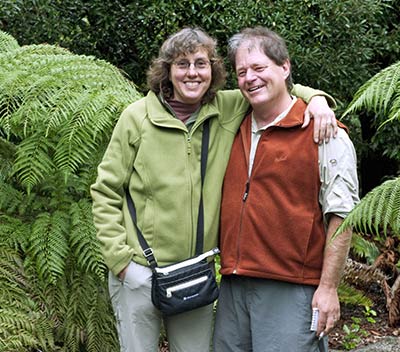
What We Do
The Far Reaches Botanical Conservancy (FRBC) acquires and conserves botanically significant wild and cultivated ornamental plants new to North America with special emphasis on those that are threatened or vulnerable to loss. We maintain these plants as a living reference collection for education, public enjoyment and scientific purposes. Our site is home to thousands of rare native and introduced ornamentals, many of which are imperiled in their native ranges. We value the diversity of plant species and cultivars in the world and work to ensure their survival. We believe it is important to facilitate the conservation of these important genetic and horticultural resources.
Just as we value the diversity of plant species and cultivars around the world, we value the diversity of gardeners who enjoy and appreciate these plants.
We respect all life sharing our space here – insect, avian, amphibian, and mammal – and as such, use no harmful pesticides or agricultural chemicals in growing and maintaining FRBC plants.
Our Goals
- Continue Collection of At-Risk Plants
Conduct horticultural research and collecting expeditions to search for species acutely threatened by immediate human pressure or climate change, particularly those not capable of migration or adaptation, and actively import plants from at-risk specialty collections in Europe and elsewhere. -
Ensure Conservation and Distribution of Threatened Plants
Pursue ex situ conservation practices and cultivation, with distribution to botanical institutions, public gardens, scientific researchers and the horticultural community.
- Broaden Engagement and Education of Diverse Communities
Increase public participation in horticulture and gardening by providing education on how our work and plant collections contribute to understanding and preserving global biodiversity.
- Build Infrastructure and Organizational Sustainability
Steward the Conservancy’s collection effectively and establish systems to ensure the long-term viability of the plant collections and the organization.
About the Founders
 Sue Milliken and Kelly Dodson met as members of a seed collecting expedition to Yunnan in 1997. It was while standing together at 4300 meters looking down at a drab, winter-browned prickly cushion of Arenaria kansuensis that both spontaneously gushed “I love Arenaria” followed by “But I can never sell them”. This coming from long-time nursery owners of rare plants with Sue in Vermont and Kelly in Washington.
Sue Milliken and Kelly Dodson met as members of a seed collecting expedition to Yunnan in 1997. It was while standing together at 4300 meters looking down at a drab, winter-browned prickly cushion of Arenaria kansuensis that both spontaneously gushed “I love Arenaria” followed by “But I can never sell them”. This coming from long-time nursery owners of rare plants with Sue in Vermont and Kelly in Washington.
This shared passion for plants that are important botanically and of merit to collectors and niche gardening led to them combining their life efforts on 6 acres in Port Townsend WA in 2000 and the rare plant nursery Far Reaches Farm came into fruition shortly thereafter.
They have participated in a number of overseas plant hunting expeditions in collaboration with the Rhododendron Species Botanic Garden thanks to a continued connection from Kelly’s years there as Propagation and Nursery Manager. While all of these trips offered significant milestones such as being the second westerners to climb Nagaland’s Mt Saramati in 2003, none can eclipse the highlight of the 2010 expedition.
They had just passed by a hillside punctuated by exclamation points of tall stems bearing fat seed capsules of the Giant Lily, Cardiocrinum giganteum when they rounded a corner and beheld a plant hunter’s dream. Before them stood an amazing Hornbeam, Carpinus fangiana whose seed is contained in highly ornamental, pendant hop-like bracts which can reach 20 inches in length. Overcome, Kelly blurted “So whaddya think? We should get married” and so they did.
Their lifetime embodiment of plant knowledge and a long history of cultivating and conserving rare plants has led them to the clear realization that their particular attributes have much to offer the greater good in the plant world and that this will be best served by the formation of the nonprofit, Far Reaches Botanical Conservancy. The excitement they feel at the prospects and potential of this plant introduction and conservation venture can only be compared to the best moments of plant hunting in the field, second perhaps only to the Carpinus fangiana.



